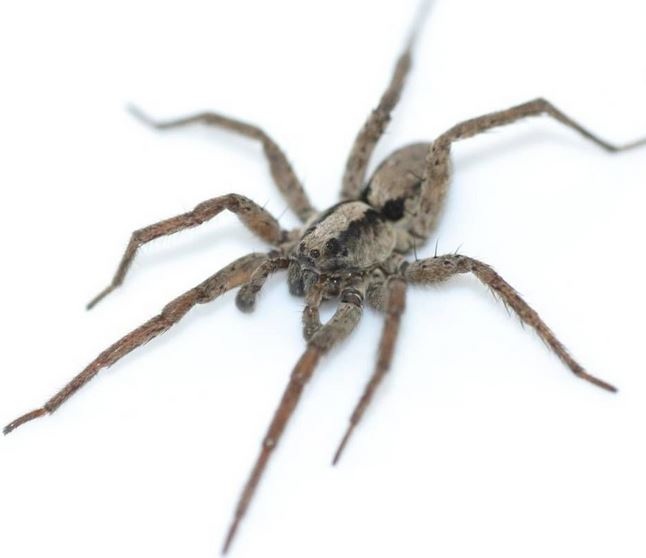Male spiders strum love tunes on leaves to woo potential mates. The females ‘hear’ the serenade vibrations with sensors in their legs, called sensillae, which also alert them to the presence of predators or prey.
A team of researchers at the University of Cincinnati’s Department of Biological Sciences set up a studio to record the vibrations (sounds) created by spiders when they were on different types of surfaces.
They found that spiders’ created vibrations by using a surface, such as that of a leaf, to project their courting ritual sounds.
 A male ‘purring’ wolf spider. (Image: acoustics.org)
A male ‘purring’ wolf spider. (Image: acoustics.org)
Professor George Uetz, an internationally known expert on spiders, and Ph.D. candidate Alexander Sweger, observed the North American purring wolf spider (Gladicosa gulosa).
Spiders’ chorus heard in forests
Their study was triggered by ecologists who reported hearing a quiet ‘chorus of spiders’ while working in the forests in the United States.
After observing and recording the spiders, they discovered that the males used leaves to transmit sounds to attract females. They suggest their findings provide clues about sound-based communication early on in the evolution of animals.
At the 169th ASA (Acoustical Society of America) Meeting on Animal Bioacoustics, Mr. Sweger said:
“The purring wolf spiders create vibrations when they communicate with potential mates in a manner very similar to other wolf spider species, but unlike other wolf spider species, they also create airborne sounds during this communication.”
“Since we know spiders do not possess typical “ears” for hearing these sounds, we are interested in finding out if females or other males are able to use these sounds in communication. If they do, then this species could be used as an unusual model for the evolution of acoustic communication.”
“Our work has shown that the leaves themselves are vital to the use of acoustic communication in this species. Males can only produce the sounds when they are on a surface that vibrates (like a leaf) and females will only respond to the sounds when they are on a similar surface.”
 A spectrogram of a male wolf spider’s vibration. (Image: acoustics.org)
A spectrogram of a male wolf spider’s vibration. (Image: acoustics.org)
Male vibrations aimed specifically at females
When they removed the vibrations and just provided the acoustic signal, the female spiders still showed a considerable response, while the males did not. This suggests that the sounds the males make play a part in communicating directly and specifically with females, the researchers said.
Prof. Uetz and colleagues used female spider scent to encourage the males to ‘purr’.
In an interview with the BBC, Mr. Sweger said:
“I decided I wanted to find out whether this species used airborne sound to communicate. On granite or wood or dirt, you get little to no vibration and almost no sound. But on a leaf, or paper or parchment, you get vibration and you get the airborne sound.”
They then played the recorded sound to the females, without the vibrations produced by the males, i.e. just the airborne sound. They found that the mating ritual was only effective when both the airborne sound and vibrations were present, and if the spiders were on leaves or similar surfaces – surfaces that vibrated easily.
Prof. Uetz explained to the BBC:
“(Female spiders) pick up vibrations – so the sound is transmitted to them from leaf to leaf”.
Spiders can hear through special sensory organs in their legs “They’re called sensillae, they’re sort of in their knees – that’s how they hear,” Prof Uetz explained.

